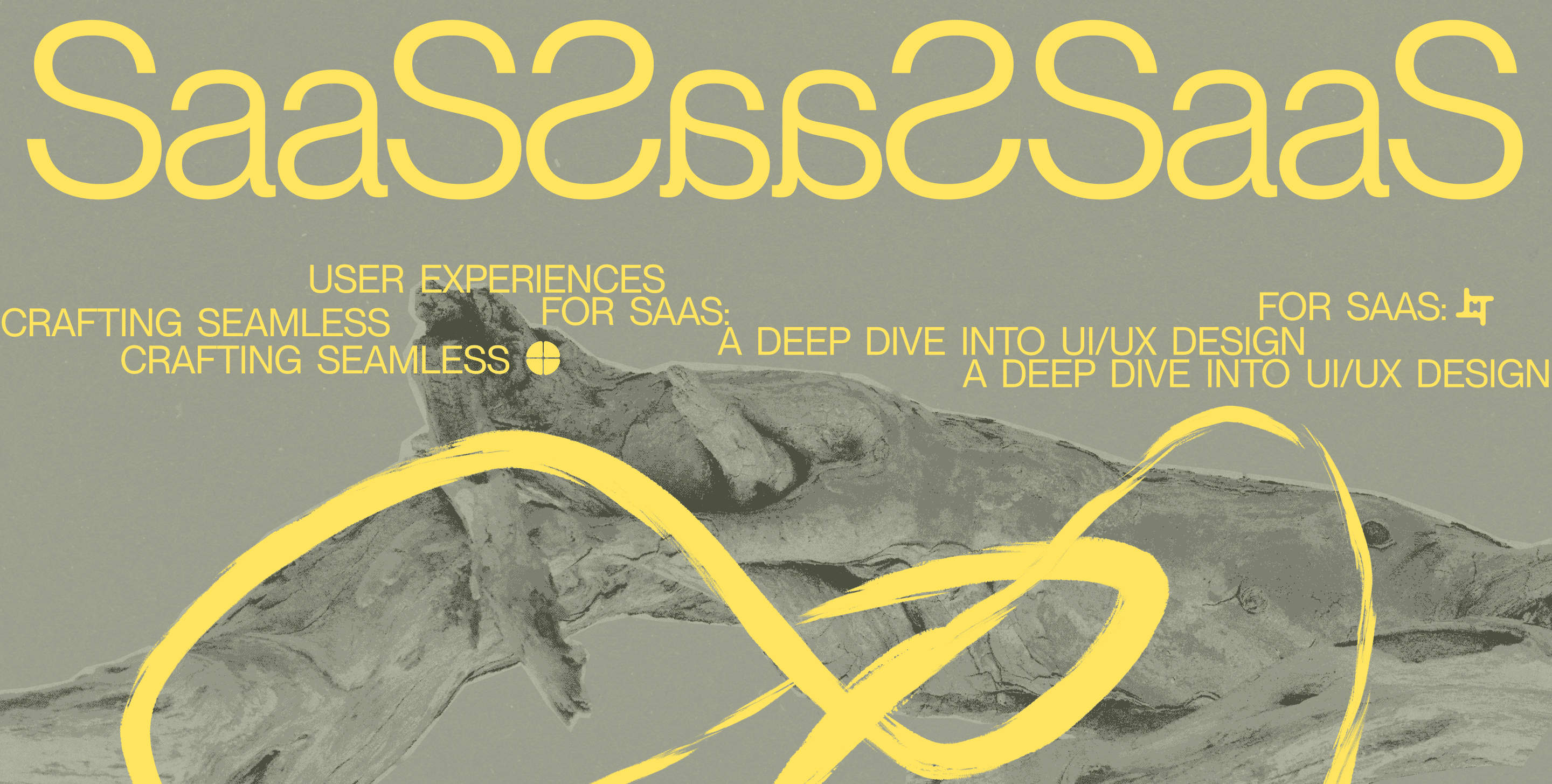Outline:
Compelling UI and UX design is critical for success in SaaS platforms. When examining the software as a service overview, it’s vital to remember that these design components shape every interaction within the software, influencing user satisfaction, retention, and loyalty. For SaaS UI UX design, intuitive design principles are key to elevating the user experience by consistently meeting and surpassing expectations. Every navigation and interaction should enrich the journey and ensure seamless, efficient, and user-friendly SaaS environments.
The Pillars of Coherent SaaS UI Design
Profitable UI design in SaaS relies on a few fundamental principles that guide how users interact on digital platforms. Here, we uncover these core components and the strategic use of visual hierarchy.
Crafting Clarity and Intuitiveness
In SaaS, prioritizing simplicity in UI design is indispensable. Crafting interfaces that users find intuitive enhances their initial engagement and sustains their usage over time. This segment dives into the techniques that strip away complexity and focus on clean, straightforward designs that anyone can operate without a steep learning curve.
Harmonizing User Experience Across Multiple Platforms
Maintaining consistency is essential as users switch between devices. A SaaS platform must offer a uniformly excellent experience, whether accessed via a smartphone, tablet, or desktop. To ensure that both core functionality and aesthetic integrity are preserved, regardless of the access point, you need to achieve a smooth and cohesive transition across all devices.
Guiding Eyes and Actions with Visual Hierarchy
Effective use of visual hierarchy is crucial for guiding users naturally through tasks, emphasizing the right elements at the right time. By thoughtfully arranging content and visual components, you lead users naturally through their interactions and make it easier for them to locate crucial information and perform desired actions. This approach improves user experience and boosts engagement and conversion rates.
UX Strategies for Enhanced Engagement
Designing captivating user experiences needs a combination of personalization, continuous feedback, and engaging interactivity. Imagine a SaaS platform that can anticipate what users need through sophisticated predictive design, polish its interface using insightful feedback, and enchant visitors with dynamic, interactive elements. Such SaaS platforms will deliver tailored experiences, which gives rise to greater engagement and satisfaction.
Innovative Personalization and Predictive Strategies for Enhanced User Experiences
Harnessing user data goes beyond merely tracking behavior—it’s about foreseeing user needs and tailoring their journey to match their preferences. By leveraging advanced algorithms, UX design for SaaS can anticipate user actions and personalize the experience. Adapting the SaaS UX interface in real-time allows services to cater to individual requirements.
Driving Innovation with User Feedback and Adaptive Design
In a continually evolving market, feedback is gold. Implementing a robust system for collecting and evaluating user feedback ensures that the UX design for SaaS stays flexible and adaptive. By embedding user insights into the design process, every update enhances usability and aligns with the ever-evolving expectations of users.
Interactive Elements to Spark Active Engagement
Dynamic features are at the heart of an interactive SaaS UX interface. Incorporating components like drag-and-drop interfaces, interactive tutorials, and real-time data visualizations can transform passive interactions into active engagements. These features make the experience more enjoyable and significantly boost the likelihood of user retention.

Blueprinting the Ultimate SaaS UI UX Design Journey
Navigating the complexities of SaaS UI UX design is a strategic process that demands precision and creativity from the get-go. Each step in this meticulous process is aimed at building an efficient framework that enriches the platform interaction. From initial research to the deployment of interactive elements, we will probe how each phase uniquely shapes a user-centric interface that distinguishes itself in the competing landscape of SaaS products.
01 Initiating with In-Depth User Insights
The SaaS UI UX design begins with comprehensive user research. This foundational step is essential for uncovering the unique behaviors, demands, and assumptions of your target audience. Through detailed analysis and user engagement, insights gathered here set the stage for a responsive and tailored SaaS UX design that truly resonates with the users.
02 Sculpting User Archetypes and Mapping Their Paths
Once data collection is complete, the next pivotal step involves creating detailed user personas and journey maps. These tools are invaluable in SaaS UX design, as they provide a clear blueprint for crafting experiences finely tuned to the distinct user profiles. By mapping out every critical touchpoint, journey maps ensure that interactions across the SaaS UI/UX are smooth and intuitive. Such a process helps designers grasp the varied needs and motivations of different user segments and guide them in crafting a cohesive and engaging user experience from start to finish.
03 Visualizing Functionality Through Wireframes
Transitioning from theory to practical application, this stage focuses on sketching and wireframing. It is here that the structural layout of the SaaS UX interface starts to materialize, forming the foundation for the effective application of design principles. Wireframes are crucial for visualizing the primary framework of the SaaS UI/UX, focusing on user flow and operational efficiency. This step transforms abstract ideas into tangible structures, setting the stage for a seamless and intuitive SaaS UI/UX.
04 Prototyping for Real-World Use
Moving into a more dynamic part, this stage focuses on transforming static wireframes into interactive prototypes. This step allows for the testing of the practical components of the user interface, offering a preliminary look at how real users will catch on with the SaaS UX interface. It’s a critical phase for refining and perfecting the design before in-depth development begins.
05 Infusing Aesthetics into Function
With the functional prototype established, the visual design phase begins. This stage provides the SaaS UI UX design to life by integrating brand-aligned colors, typography, and other aesthetic elements. The result is a highly functional and visually captivating interface.
06 Synergizing Design & Development
As the design finalizes, the partnership between UX designers and developers intensifies to provide the seamless translation of design into code. This partnership is fundamental in maintaining the integrity of the SaaS UI/UX during the development phase, which makes certain that the live environment replicates the tested designs accurately.
07 Rolling Out and Enhancing
Launching a SaaS platform is merely the starting point. UX design for SaaS necessitates ongoing adjustments and optimizations driven by user feedback and shifting market trends. Continuous engagement helps in refining the SaaS UX design and keeps the platform aligned with user needs and market demands.
The journey through SaaS UI UX design is far from over at launch. It evolves as visitor demands and technological landscapes shift. This ongoing process requires vigilance, innovative thinking, and a steadfast devotion to excellence. By doing so, the SaaS platform will consistently surpass user expectations, provide its relevance and effectiveness in an altering digital world. Every step in this design journey lays the foundation for a genuinely transformative user experience.
On a Final Note
As we wrap up our exploration of SaaS UI UX design, it’s clear that its role extends beyond aesthetics to fundamentally shape user interactions and company’s success. The creation of UI/UX design is a meticulous mix of art and science, developed to foster intuitive and alluring user experiences.
SaaS UI UX design must adapt continually, leveraging advancements in AI, machine learning, and interactive tools to meet rising user expectations. This dedication to innovation is not merely about keeping pace but setting the pace, remaining SaaS platforms competitive.
Feedback is vital, acting as a guiding star for ongoing enhancement and alignment with user preferences and shifting market trends. Achieving excellence in SaaS UI UX design directly fosters user comfort, trustworthiness, and company’s development.
Should you have any further questions about SaaS or need more insights into its risks, please don’t hesitate to contact us. We are here to provide all the information you need to satisfy your interests.





